Introduction
Big Data is a large and complex dataset generated by various sources and grows exponentially. It is so extensive and diverse that traditional data processing methods cannot handle it. The volume, velocity, and variety of Big Data can make it difficult to process and analyze. Still, it provides valuable insights and information that can be used to drive business decisions and innovation.
Big Data can come from various sources, such as social media, internet searches, transactions, sensors, and machine-generated data. The sheer size of Big Data requires powerful and scalable technologies, such as Hadoop, Spark, and NoSQL databases, to store and process it.
The value of Big Data lies in its ability to reveal patterns, trends, and insights that would not be apparent from smaller datasets. It can be used for various purposes, including market research, fraud detection, predictive maintenance, and personalized marketing.
Table of Contents
Applications of Big Data
Big Data has many applications across various industries and can bring significant value to organizations that leverage it effectively. Some of the common ways industries derive value from Big Data are:
Healthcare
Big data improves patient outcomes, reduces costs, and advances medical research. For example, it can analyze large amounts of patient data to identify risk factors and disease patterns or develop personalized treatment plans.
Retail
Big Data is used in retail to better understand customer behavior, preferences, and purchasing habits. This information can be used to improve marketing efforts, increase sales, and optimize supply chain management.
Finance
Big Data is used to detect fraud, assess credit risk, and improve investment decision-making. For example, financial institutions can analyze large amounts of data to identify unusual behavior patterns that may indicate fraudulent activity.
Manufacturing
Big Data is used to optimize production processes, reduce costs, and improve product quality. For example, it can be used to analyze machine data to identify potential equipment failures before they occur.
Telecommunications
Big data improves network performance, customer experience, and marketing efforts. For example, telecommunications companies can analyze call data records and usage patterns to optimize network capacity and identify potential issues.
Transportation
Big Data is used to optimize routes, reduce fuel consumption, and improve safety. For example, it can analyze vehicle GPS and sensor data to identify the most efficient routes and improve driver safety.
These are just a few examples of how Big Data can bring value to different industries. The applications of Big Data can vary depending on the industry and a company’s specific needs.
Hadoop
An open-source framework for storing and processing big data. It provides a distributed file system called Hadoop Distributed File System (HDFS) and a computational framework called MapReduce. HDFS is designed to store and manage large amounts of data across a cluster of commodity hardware. MapReduce is a programming model used to process and analyze large datasets in parallel. Hadoop is highly scalable and fault-tolerant, making it suitable for processing massive datasets in a distributed environment.
Source: wikimedia.com
Pros:
- Scalable and flexible data storage
- Cost-effective solution for processing big data
- Supports a wide range of data processing tools
Cons:
- Complex setup and administration
- Performance limitations for real-time data processing
- Limited security features
Spark
An open-source data processing engine for big data analytics. It provides an in-memory computational engine that can process large datasets 100 times faster than Hadoop’s MapReduce. Spark’s programming model is based on Resilient Distributed Datasets (RDDs), distributed data collections that can be processed in parallel. Spark supports various programming languages, including Python, Java, and Scala, making it easier for developers to write big data applications. Spark’s core APIs include Spark SQL, Spark Streaming, MLlib, and GraphX, which provide functionality for SQL queries, stream processing, machine learning, and graph processing.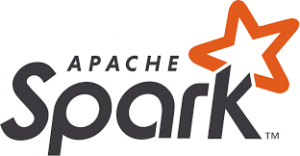
Source: wikipedia.com
Pros:
- Fast and efficient data processing
- Supports real-time data streaming and batch processing
- Interoperable with other big data tools such as Hadoop and Hive
Cons:
- High memory requirements for large datasets
- Complex setup and configuration
- Limited machine learning capabilities compared to other tools
Flink
An open-source data processing framework for real-time and batch processing. Flink provides a streaming dataflow engine to process continuous data streams in real time. Unlike other stream processing engines that process streams as a sequence of small batches, Flink processes streams as a continuous flow of events. Flink’s stream processing model is based on data streams and stateful stream processing, which enables developers to write complex event processing pipelines. Flink also supports batch processing and can process large datasets using the same API.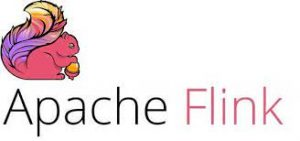
Source: knoldus
Pros:
- Real-time data processing capabilities
- Efficient event-driven processing
- Scalable and fault-tolerant
Cons:
- The steep learning curve for new users
- Limited support for some big data use cases
- Performance limitations for extensive datasets
Hive
An open-source data warehousing tool for managing big data. It manages large datasets stored in Hadoop’s HDFS or other compatible file systems using SQL-like queries called HiveQL. HiveQL is similar to SQL, making it easier for SQL users to work with big data stored in Hadoop. Hive translates HiveQL queries into MapReduce jobs, which are then executed on a Hadoop cluster.
Source: wikipedia
Pros:
- Supports SQL-like queries for data analysis
- Interoperable with other big data tools
- Scalable and efficient data warehousing solution
Cons:
- Performance limitations for real-time data processing
- Limited support for advanced analytics and machine learning
- Complex setup and administration
Storm
An open-source real-time data processing system for handling big data streams. It was developed at BackType and later open-sourced. Storm processes data streams in real-time, making it ideal for use cases where data must be processed and analyzed as it is generated. A storm is highly scalable and can be easily deployed on a cluster of commodity servers, making it well-suited for big data processing. Storm also provides reliability through its use of a “master node” that oversees the processing of data streams, automatically re-routing data to other nodes in the event of a failure.
Source: wikipedia
Pros:
- Real-time data processing capabilities
- Scalable and fault-tolerant
- Supports a wide range of data sources
Cons:
- Complex setup and configuration
- Limited support for batch processing
- Performance limitations for huge datasets
Cassandra
An open-source NoSQL database for handling big data. It was initially developed at Facebook and was later open-sourced. Cassandra is designed to handle large amounts of data across many commodity servers, providing high availability with no single point of failure. It uses a peer-to-peer architecture, which allows it to scale horizontally and easily handle increasing amounts of data and traffic. Cassandra also provides tunable consistency, meaning clients can choose the consistency they need for a particular operation.
Source: wikipedia
Pros:
- High availability and scalability
- Supports real-time data processing
- Efficient handling of large amounts of unstructured data
Cons:
- Complex setup and administration
- Limited support for advanced analytics
- Performance limitations for enormous datasets
Zookeeper
An open-source tool for managing the coordination of distributed systems. It was originally developed at Yahoo! and later open-sourced. ZooKeeper provides a centralized repository for configuration information, naming, and synchronization services for distributed systems. It also provides a simple, distributed way to coordinate tasks across a cluster of servers, making it well-suited for large-scale distributed systems. ZooKeeper is known for its reliability and fault tolerance, as it uses a “quorum” system to ensure that the system’s state remains consistent, even in the event of a node failure.
Source: wikipedia
Pros:
- Provides coordination and management for distributed systems
- Scalable and fault-tolerant
- Supports a wide range of use cases
Cons:
- Complex setup and administration
- Performance limitations for vast datasets
- Limited security features
Mahout
An open-source machine learning library for big data analysis. It was created to make it easier for developers to use advanced machine learning algorithms on large amounts of data. Mahout provides a library of algorithms for tasks such as recommendation systems, classification, clustering, and collaborative filtering. It is built on top of Apache Hadoop, allowing it to scale to handle enormous amounts of data, making it well-suited for big data processing. Mahout also provides a simple, user-friendly API for integrating algorithms into applications, making it accessible to many developers and organizations. Mahout helps organizations derive insights from their data and make better data-driven decisions by providing scalable machine learning algorithms.
Source: wikipedia
Pros:
- Supports a wide range of machine learning algorithms
- Interoperable with other big data tools
- Scalable and efficient data analysis
Cons:
- Limited support for deep learning and neural networks
- The steep learning curve for new users
- Performance limitations for huge datasets
Pig
An open-source platform for data analysis and manipulation of big data. It was created to make it easier for developers to process and analyze large amounts of data. Pig provides a simple scripting language called Pig Latin, allowing developers to write complex data processing tasks concisely and easily. Pig translates Pig Latin scripts into a series of MapReduce jobs that can be executed on a Hadoop cluster, allowing it to scale to handle substantial amounts of data. This makes Pig well-suited for use in big data processing and analysis.
Source: wikipedia
Pros:
- Supports data analysis and manipulation using a high-level programming language
- Interoperable with other big data tools
- Scalable and efficient data processing
Cons:
- Performance limitations for real-time data processing
- Limited support for advanced analytics and machine learning
- The steep learning curve for new users
HBase
An open-source NoSQL database for handling big data, especially unstructured data. It is a column-oriented database that provides real-time, random access to big data. HBase is designed to handle huge amounts of data, scaling to billions of rows and millions of columns. It uses a distributed architecture, allowing it to scale horizontally across many commodity servers and provide high availability with no single point of failure. HBase also provides strong consistency, ensuring that data is always up-to-date and accurate, even in the face of node failures. This makes HBase well-suited for use cases requiring real-time data access and strong consistency, such as online gaming, financial services, and geospatial data analysis.
Source: wikipedia
Pros:
- Supports real-time data processing and retrieval
- Scalable and efficient handling of large amounts of unstructured data
- Interoperable with other big data tools
Cons:
- Complex setup and administration
- Limited support for advanced analytics
- Performance limitations for enormous datasets
Cloudera
Advanced data management, machine learning, and analytics platform widely used in the industry.

Source: cloudera.com
- Pros: Advanced features such as data management, machine learning, and analytics. A widely used platform that is well-regarded in the industry.
- Cons: Higher cost compared to open-source alternatives, limited customization options.
MapR
High-performance, reliable, and secure Big Data platform for enterprise use cases.
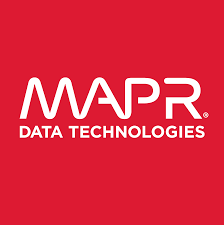
Source: Maprwikipedia.com
- Pros: High-performance, reliable, and secure platform for enterprise use cases.
- Cons: Higher cost compared to open-source alternatives, limited customization options.
Databricks
Collaborative environment for data science, engineering, and business teams to work together on Big Data projects.
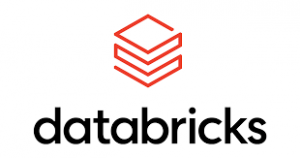
Source: databricks.com
- Pros: Collaborative environment for data science, engineering, and business teams to work together on Big Data projects.
- Cons: Higher cost compared to open-source alternatives, limited customization options.
IBM BigInsights
Comprehensive Big Data platform for data management, analytics, and machine learning.
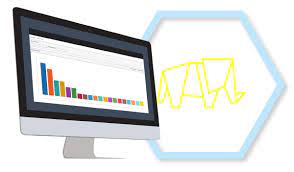
Source: IBMcloud
- Pros: Comprehensive Big Data platform that provides a range of features for data management, analytics, and machine learning.
- Cons: Higher cost compared to open-source alternatives, limited customization options.
Microsoft HDInsight
Easy access to Apache Hadoop and Apache Spark on Microsoft Azure.
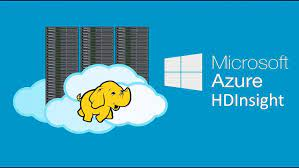
Source: Micrsosoft tech community
- Pros: Easy access to Apache Hadoop and Apache Spark on Microsoft Azure.
- Cons: Higher cost compared to open-source alternatives, limited customization options.
Talend
Comprehensive Big Data platform for data integration, quality, and management.
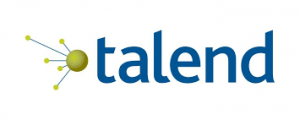
Source: Wikimedia commons
- Pros: Comprehensive Big Data platform that provides various tools for data integration, quality, and management.
- Cons: Higher cost compared to open-source alternatives, limited customization options.
SAP HANA
In-memory Big Data platform for real-time data processing and analytics.
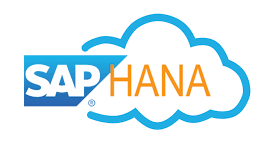
Source: Accely
- Pros: In-memory Big Data platform that provides real-time data processing and analytics capabilities.
- Cons: Higher cost compared to open-source alternatives, limited customization options.
Informatica Big Data Edition
Big Data platform for data integration, quality, and management.
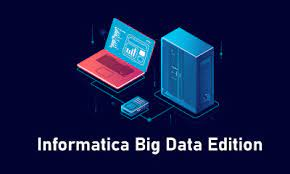
Source: Mindmajix
- Pros: Big Data platform that provides data integration, quality, and management capabilities.
- Cons: Higher cost compared to open-source alternatives, limited customization options.
Oracle Big Data Appliance
Pre-configured Big Data platform for Apache Hadoop and Apache Cassandra on Oracle hardware.

Source: research gate
- Pros: Pre-configured Big Data platform that provides easy access to Apache Hadoop and Apache Cassandra on Oracle hardware.
- Cons: Higher cost compared to open-source alternatives, limited customization options.
Teradata Vantage
Comprehensive Big Data platform for advanced analytics, machine learning, and data management.
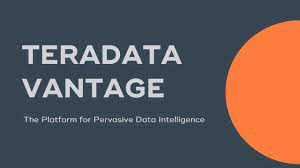
Source: Teradata
- Pros: Comprehensive Big Data platform that provides advanced analytics, machine learning, and data management capabilities.
- Cons: Higher cost compared to open-source alternatives, limited customization options.
How much do Big Data Engineers earn?
The salary of a Big Data Engineer can vary widely based on factors such as location, company, and experience. On average, Big Data Engineers in the United States can earn between $100,000 and $150,000 annually, with top earners making over $180,000 annually.
In India, the average salary for a Big Data Engineer is around INR 8,00,000 to INR 15,00,000 per year. However, salaries can vary greatly based on factors such as the company, location, and experience.
It’s important to note that salaries in the technology industry can be high, but the demand for skilled Big Data Engineers is also high. So, it can be a lucrative career option for those with the right skills and experience.
Roadmap to Learn Big Data Technologies
To learn big data, here is a possible roadmap:
- Learn programming: A programming language like Python, Java, or Scala is essential for working with big data. Python is popular in the data science community because of its simplicity, while Java and Scala are commonly used in big data platforms like Hadoop and Spark. Start with the basics of programming, such as variables, data types, control structures, and functions. Then learn how to use libraries for data manipulation, analysis, and visualization.
- Learn SQL: SQL is the language used for querying and managing big data in relational databases. It’s important to learn SQL to work with large datasets stored in databases like MySQL, PostgreSQL, or Oracle. Learn how to write basic queries, manipulate data, join tables, and aggregate data.
- Understand Hadoop: Hadoop is a big open-source data processing framework that provides a distributed file system (HDFS) and a MapReduce engine to process data in parallel. Learn about its architecture, components, and how it works. You’ll also need to learn how to install and configure Hadoop on your system.
- Learn Spark: Apache Spark is a popular big data processing engine faster than Hadoop’s MapReduce engine. Learn how to use Spark to process data, build big data applications, and perform machine learning tasks. You’ll need to learn the Spark programming model, data structures, and APIs.
- Learn NoSQL databases: NoSQL databases like MongoDB, Cassandra, and HBase are used for storing unstructured and semi-structured data in big data applications. Learn about their data models, query languages, and how to use them to store and retrieve data.
- Learn data visualization: Data visualization presents data in a visual format, such as charts, graphs, or maps. Learn how to use data visualization tools like Tableau, Power BI, or D3.js to present data effectively. You’ll need to learn how to create easy-to-understand, interactive, and engaging visualizations.
- Learn Machine Learning: Machine learning is used to analyze big data and extract insights. Learn about machine learning algorithms, including regression, clustering, and classification. You’ll also need to learn how to use machine learning libraries like Scikit-learn, TensorFlow, and Keras.
- Practice with big data projects: To become proficient in big data, practice is essential. Work on big data projects that involve processing and analyzing large datasets. You can start by downloading public datasets or by creating your own datasets. Try to build end-to-end big data applications, from data acquisition to data processing, storage, analysis, and visualization.
Other than this, you may have a look at the following things also:
- Ways to deal with semi-structured data with High volumes.
- Utilizing ETL Pipelines to make our system deployed on Cloud Like Azure, GCP, AWS, etc.
- How can data mining concepts be used to prepare interactive dashboards and make a complete ecosystem?
- The efficiency of Batch processing vs. Stream Processing in Big Data Analytics or Business Intelligence.
Remember that big data is a vast field; this is just a basic roadmap. Keep learning and exploring to become proficient in big data.
To learn more about Big Data Technologies from senior people, you may refer to archives of Analytics Vidhya for Data Engineers.
Conclusion
In conclusion, using Big Data tools has become increasingly important for organizations of all sizes and across various industries. The tools listed in this article represent some of the most widely used and well-regarded Big Data tools among professionals in 2023. Whether you’re looking for open-source or closed-source solutions, there is a Big Data tool out there that can meet your needs. The key is to carefully evaluate your requirements and choose a tool that best fits your use case and budget. With the right Big Data tool, organizations can derive valuable insights from their data, make informed decisions, and stay ahead of the competition.
The key takeaways of this article are:
- Big Data is an increasingly important tool for organizations of all sizes and across various industries.
- There are a large number of Big Data tools available, both open-source and closed-source.
- The most widely used open-source Big Data tools include Apache Hadoop, Apache Spark, Apache Flink, Apache Hive, Apache Storm, Apache Cassandra, Apache Zookeeper, Apache Mahout, Apache Pig, and Apache HBase.
- Some of the most widely used closed-source Big Data tools include Cloudera, MapR, Databricks, IBM BigInsights, Microsoft HDInsight, Talend, SAP HANA, Informatica Big Data Edition, Oracle Big Data Appliance, and Teradata Vantage.
- The suitability of a particular Big Data tool depends on the organization’s specific requirements and use cases.
- The right Big Data tool can help organizations derive valuable insights from their data, make informed decisions, and stay ahead of the competition.
- The field of Big Data is rapidly evolving, and it is important for organizations to keep up-to-date with the latest trends and technologies to stay competitive.
To learn all the mentioned technologies related to big data in a more structured and concise manner, you can refer to the following courses or programs by Analytics Vidhya by experienced people. After learning, you may be hired by organizations like Deloitte, PayPal, KPMG, Meesho, paisaBazzar, etc.
Analytics Vidhya Courses to Master Big Data Tools and Technologies
Related
- SEO Powered Content & PR Distribution. Get Amplified Today.
- Platoblockchain. Web3 Metaverse Intelligence. Knowledge Amplified. Access Here.
- Source: https://www.analyticsvidhya.com/blog/2023/02/top-20-big-data-tools-used-by-professionals-in-2023/



